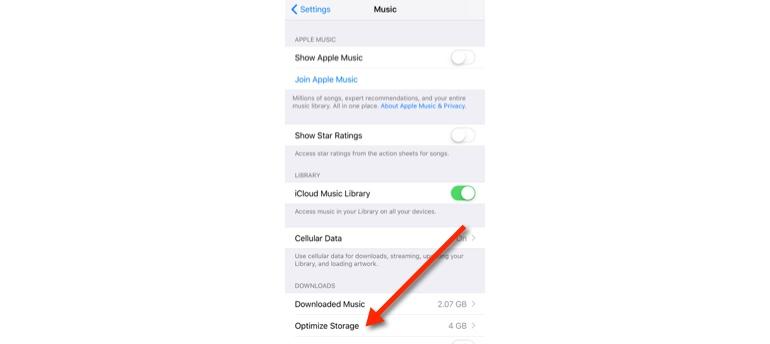
Are you always running out of space on your iPhone or iPad? Are you constantly having to delete apps and content to make room for stuff?
Well, there’s a setting buried in iOS 10 that may put an end to this forever. And if it doesn’t work, I’ll show you something else you can do instead to take the strain off your storage.
Must read: Six features the iPhone needs to stay ahead of Android
The feature is called Optimize Storage and it is perfect for those people who have too much music on their iPhones or iPads.
To find it go Settings > Music > Optimize Storage, and then flip the switch to turn it on and then choose how much minimum storage you’d like iOS to try to maintain on your device.


Once you have selected your desired minimum storage space, iOS will delete music that you have not played in a while off your device to try to hit this target. If you have a ton of music downloaded, this will be easy, if not iOS might not be able to hit the target, but it will still do what it can to help you out.
This music will still be available for download from iTunes.
A similar feature existed in iOS 9, but it offered users no way to turn it off or control it.
For those of you out there who carry around a lot of music, this setting is simply amazing (note that you must have more than 4GB of music loaded on your device for this to work), and can even allow you to make do with the 16 gigabytes of storage available on the older devices.
Don’t carry much music with you and want more free space? I hear you, and I have a possible solution for you in the form of a flash drive that connects to your iPhone or iPad via the Lightning port. A drive such as the SanDisk iXpand flash drive will allow you to move photos and other media off your iPhone or iPad’s storage drive and yet keep them accessible when you need them.
Alternatively, you can get something like the Lexar’s tiny microSD reader for Lightning devices, which along with free Lexar Mobile Manager app will allow you to move photos and video between your iPhone or iPad and a microSD card.
This allows you to add up to 256 gigabytes of storage at a fraction of the cost of what Apple charges for storage. Currently, you can pick up a 256-gigabyte microSD card for around $170, while an iPhone 7 with 256-gigabytes of storage costs $849, compared to $649 for an iPhone 7 with only 32 gigabytes.
And you’re not limited to only carrying a single microSD card.
It’s the closest thing to being able to pop an SD card into an iPhone!
See also:

